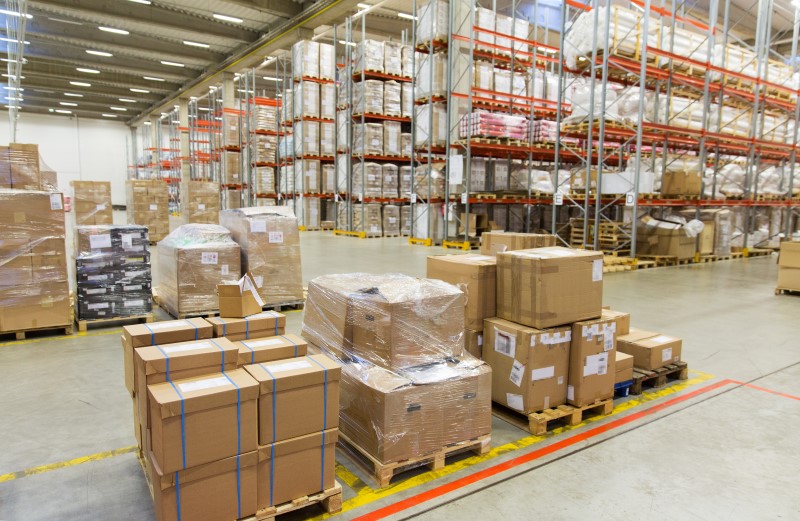Even if you don’t work in a warehouse, you’ve probably heard the buzz this year around business-to-consumer (B2C) ecommerce fulfillment. It’s no secret that demand for ecommerce shipping and fulfillment has risen dramatically during the past year of the global COVID-19 pandemic.
But what about traditional business-to-business (B2B) third-party logistics (3PL) warehouses and shippers? Many B2B warehouses service brick-and-mortar retailers by storing or shipping their products. Others may fulfill raw goods and materials needed to build a finished product. They have worked hard to adjust to supply chain backlogs, as well as changes in demand and in the marketplace over the past year just like their B2C counterparts. However, they often face some unique challenges.
Times Are Changing
B2B warehouses have been through a lot recently, even before the pandemic. Although the pandemic certainly poses an uncertain future for many businesses, brick-and-mortar replenishment has been in flux for years thanks to vicious ecommerce competition. For a warehouse for whom these retail businesses are their bread and butter, it can make achieving an optimal level of inventory difficult. With fluctuating demand for some of their biggest clients, some saw warehouse floors overburdened with stagnant inventory. When demand shifted in the other direction, as with the reopening of retail businesses following the pandemic, you can guess they had the opposite problem. Empty floor space equals sunk cost.
The COVID-19 pandemic has had a profound impact on certain product lines, including office supplies, luggage and suitcases, and restaurant tools. The practices in restaurant management, service sectors, and hospitality have changed tremendously. For B2B warehouses specializing in a particular industry, or for whom one client makes up a large percentage of their revenue, this made it especially difficult to adjust. While many warehouses serve a particular client base and have optimized their processes to perform in this area, the truth is that putting too many eggs in one basket puts a warehouse at risk. Tying the financial health of your operation to a certain company or industry means that a certain amount of your success lies in someone else’s hands.
Warehouses focused on B2B shipping and fulfillment have seen a challenging year. However, many have recognized a great opportunity in emerging ecommerce markets.
Looking to the Future
If your warehouse relies on a specific type of business for revenue, you may want to consider diversifying your client portfolio. According to last year’s Third-Party Logistics Warehouse Benchmark Report, 3PL warehouses who performed omnichannel fulfillment were 271% more likely to have experienced growth than those who were not. Further, 87% of businesses surveyed cited diversification as an important strategy for the upcoming year.
Why are ecommerce and omnichannel fulfillment growing so rapidly? Their clients and their clients’ clients are wildly diverse and the cost of acquisition is relatively low. With an infinite number of potential clients in varying industries, the potential for not only growth, but security, is huge. Expanding beyond B2B fulfillment can have its obstacles, but diversifying your client base can offer an opportunity for increased profits during good times, and a more consistent revenue stream during times when your B2B clients may be seeing a slump.
Tools to Help You Branch Out
Lack of the necessary technology can be a barrier to expansion for some traditionally B2B warehouses. Ecommerce fulfillment often requires advanced picking, packing, and scanning capabilities. A warehouse management system (WMS) that streamlines this process can allow your warehouse to scale more easily as it picks up new business. While your employees are adjusting, a WMS can also help safeguard against errors, mis-ships, and chargebacks from your customers.
If making a change requires some tweaking of your warehouse’s internal processes, implementing a WMS can help by allowing you to track and maximize efficiencies. For example, Extensiv 3PL Warehouse Manager allows you to track each unit of inventory in your warehouse via the cloud. You can automatically notify a customer when inventory is running low, helping you make the best use of available floor space. You can also seamlessly capture each billable event in your warehouse to optimize revenue.
Many rapidly growing B2C companies are searching for a partner who can assist them in their growth. Expanding your offerings can attract customers in new industries. Utilizing a WMS can enhance profits by allowing you to increase billable value-added offerings to your customers like warehouse kitting and final assembly, repackaging or refurbishment, attaching images to orders and receipts, and more.
Furthermore, whether your warehouse deals in B2B, B2C, omnichannel, or something else altogether, our Peak Season Playbook strategies can help you prepare your team for one of the busiest peak seasons yet. Good luck!
-
You’ll read about:
Be the first to know
Subscribe to our newsletter





